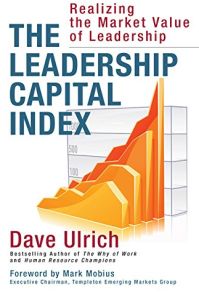Join getAbstract to access the summary!

Join getAbstract to access the summary!
Dave Ulrich
The Leadership Capital Index
Realizing the Market Value of Leadership
Berrett-Koehler, 2015
What's inside?
Human-capital thought leader Dave Ulrich offers a new model for investors who are evaluating a company’s leadership.
Recommendation
Almost every investor and business leader acknowledges the need for better methods for assessing the value of companies. The sum of an organization’s hard assets and its “intangibles” is too blunt an instrument. Investors seek insights about the quality of a firm’s workforce and, especially, its leadership, so they can make a more sophisticated, informed investing decision. Until now, the professional landscape offered few reliable, structured processes for measuring the quality of leaders. Once again, Dave Ulrich – arguably the foremost human capital thinker – provides the groundwork, in this case offering a tool set and a process that can change the game of valuing and rating companies. Long-term investors with significant assets to invest will gain the most from Ulrich’s process, but getAbstract believes it will also prove valuable to CEOs, board members, and anyone seeking a structured, evidence-based, rigorous method of evaluating organizational leadership.
Summary
About the Author
A leading authority in HR and a thought leader on the Thinkers50 list, Dave Ulrich teaches business administration at the University of Michigan.






















Comment on this summary